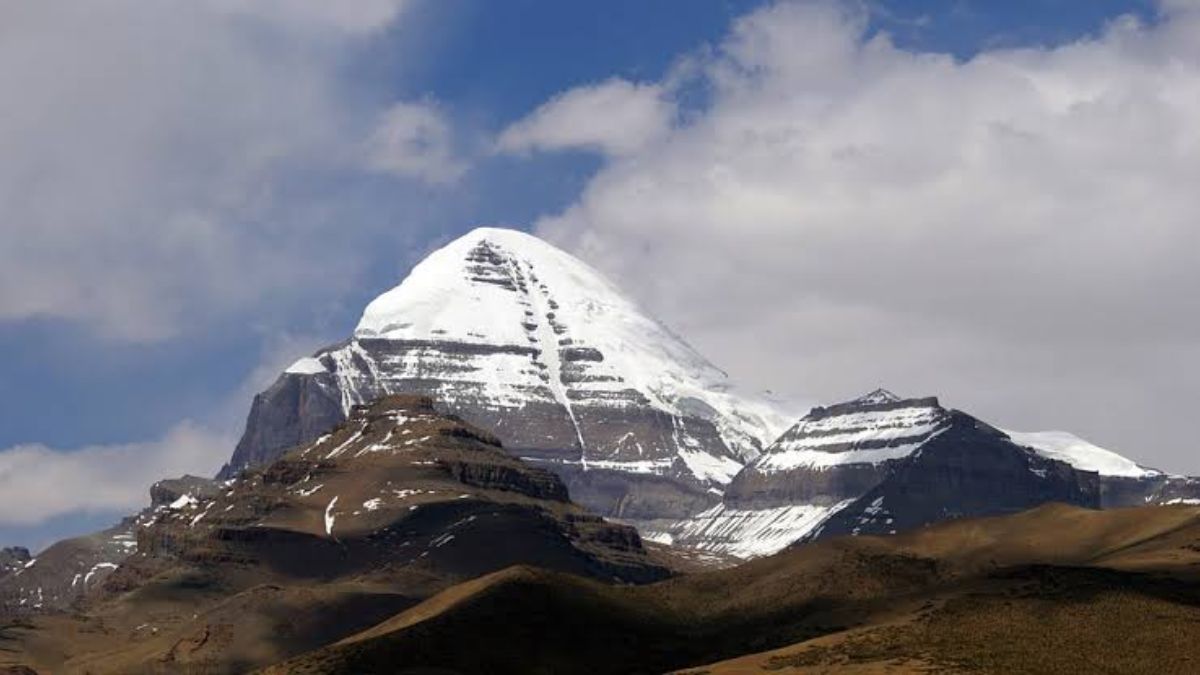The Kailash Mansarovar Yatra is resuming through the Lipulekh Pass on Monday (June 30), after a gap of five years. The pilgrimage to the 18,000-feet-high Mount Kailash near Lake Mansarovar will see hundreds of devotees making the arduous journey.
Both the lake and the mountain are revered in Hinduism, Buddhism, Jainism, and the Tibetan Bon religion. As the wait for Indians to visit these holy sites ends, we take a look at the spiritual yatra.
Here’s all you need to know.
Kailash Mansarovar
Lake Mansarovar is a freshwater lake near Mount Kailash in the Ngari Prefecture of the Tibet Autonomous Region (TAR).
Locally known as Mapam Yumtso, the lake is at a height of 4,600 metres. Hindus believe Lord Brahma created the lake, which has purifying powers.
Mount Kailash is considered the abode of Lord Shiva. The 6,638-metre high peak is revered by Buddhists, who refer to it as “Mount Meru”, as the primary source of spiritual energy.
For Jains, their Tirthankara Rishabdeva is said to have attained salvation at what they say is Mount “Ashtapada”.
The routes to reach Kailash Mansarovar
The Kailash Mansarovar Yatra was suspended in 2020 due to the Covid-19 pandemic. However, it was not resumed even post-pandemic, owing to tensions between India and China, especially the Galwan Valley standoff in 2020.
The talks to resume the yatra began formally in December last year amid a thaw in frosty relations between the two countries.
As the Kailash Mansarovar Yatra finally begins, devotees can take two routes to make it to Lake Mansarovar from India. They can either go via Nathu La pass in Sikkim or Lipulekh Pass in Uttarakhand.
Impact Shorts
More ShortsAt an altitude of 4,310 metres, the Nathu La pass is on the border between Sikkim and the Tibet Autonomous Region. The route, fully accessible by vehicles, to Mansarovar lake from this pass is nearly 1,500 km. Devotees would only need to trek 35-40 km for Parikramas (circling the mountain and lake).
The Lipulekh pass from Uttarakhand is close to the trijunction of India, Nepal and China. While the lake is nearly 50 km from the border between the Indian state and TAR, the terrain makes the journey tough. The route involves 200 km of hard trekking.
Only those between the ages of 18-70 are allowed to undertake the yatra, which typically takes over 20 days. The pilgrims must be physically and medically fit and have a valid Indian passport.
How many will undertake Kailash Mansarovar Yatra?
India has allowed 750 nationals to undertake the Kailash Mansarovar Yatra this year. The yatra is being held from June to August.
The pilgrims will travel in 15 groups, travelling through Nathu La pass in Sikkim and Lipulekh Pass to reach the holy site in Tibet.
The first batch of 36 Indian pilgrims has already visited Mount Kailash and the Mansarovar lake through the Nathu La pass in Sikkim.
The yatra through the Lipulekh Pass in Pithoragarh district is commencing on Monday. As many as 250 pilgrims in five batches, comprising 50 pilgrims each, are set to visit Kailash Mansarovar from this route this year.
The pilgrims will depart from Delhi for the journey after a medical check. After spending a night in Tanakpur, they will reach Dharchula Base Camp on July 5 and leave for the Gunji Camp the following day, Pithoragarh District Magistrate Vinod Goswami said, as per PTI.
The pilgrims will undergo a medical examination at the high altitude of Gunji, where they will stay for two days for acclimatisation. Their medical screening will again be done at Nabhidhang before they enter Tibet.
The Kailash Mansarovar Yatra is spiritually awakening for the pilgrims. However, it is a challenging trek.
“The magnitude of such places brings into focus the minuteness of self. I am reminded that my bones, my breath, the vicissitudes of my everyday life are mere flickers in an infinite universe,” Kavitha Yaga Buggana, who undertook the pilgrimage in 2011, told Outlook Traveller.
“The most challenging part of the trek is the 52-km-long Kailash Kora or parikrama that takes you to the highest altitude of 5,630 m (18,471 feet) at the Dolma Pass. The inner Kora is much more strenuous than the outer one,” Buggana added.
For those undertaking the holy pilgrimage, they should ensure to carry thermal clothing, such as jackets. They can carry medicines prescribed by their doctors for high-altitude sickness. Carrying snacks, lights and hiking sticks will also help. Instead of sneakers, wear trekking boots and warm socks.
With inputs from agencies
)